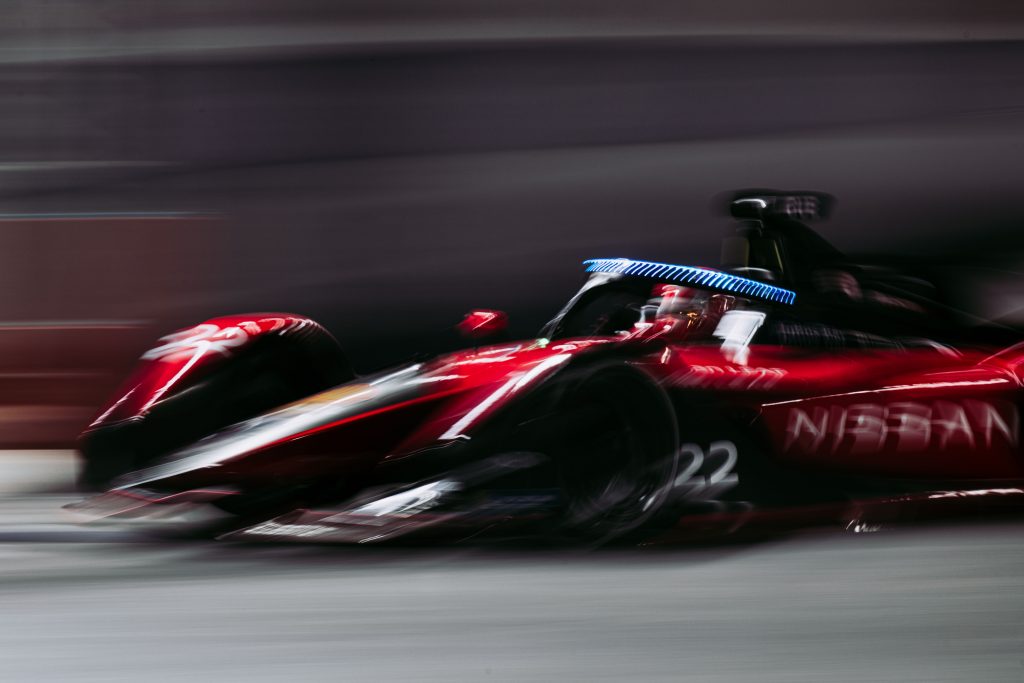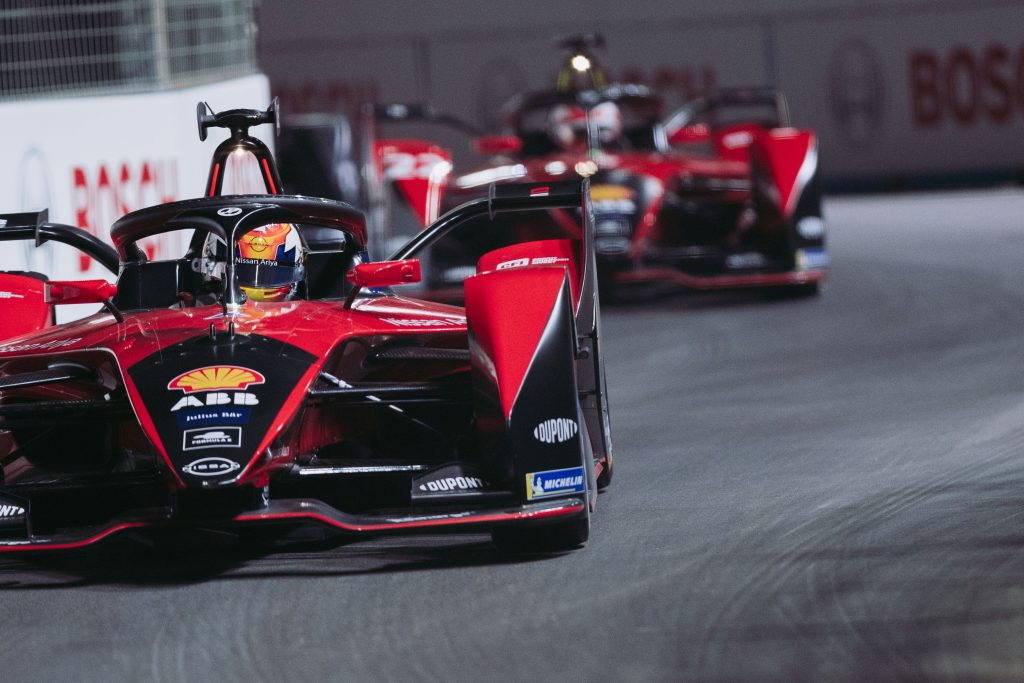Nissan e.dams showed flashes of qualifying pace in the opening rounds of the 2021/22 ABB FIA Formula E World Championship in Diriyah, Saudi Arabia.
The inaugural Season 8 double-header night races saw the Formula E Gen2 race cars delivering more performance than ever, with power increased by 20 kW to 220 kW in Race Mode and by 15 kW to 250 kW in Attack Mode.
Shorter free practice sessions and a new qualifying format featuring head-to-head runs meant that teams and drivers immediately had their work cut out.
In addition, the challenging street circuit set within the Diriyah UNESCO World Heritage Site offered unpredictable grip levels due to the extreme temperature variations and dust on the track surface, typical of the local desert climate.
Nissan e.dams drivers Sébastien Buemi and Maximilian Günther found speed in their group qualifying sessions, but ultimately finished both races outside the points.
“We are, of course, disappointed not to have scored any points here in Diriyah this weekend,” said Tommaso Volpe, Nissan global motorsports director. “However, we did show improvements in race management from the first race to the second.
“We know that we need to work hard to recover the gap to the top teams, so this is our plan as we prepare for the next race in Mexico.”
Nissan e.dams co-team principal Grégory Driot commented: “Not exactly the results we were expecting. Friday was tough for us – it took us longer than anticipated to understand the grip levels, which had an impact on our performance.
“However, we are happier with today’s race as we found better pace, but it was a little late to get the results we wanted. Still, this shows that we reacted well to the various situations and found the right direction to take with the car set-up.”
Nissan races in this all-electric world championship to bring the excitement and fun of zero-emission electric vehicles to a global audience.
As part of its goal to achieve carbon neutrality across its operations and the lifecycle of its products by 2050, Nissan intends to electrify all its new vehicle offerings by the early 2030s in key markets.
The Japanese automaker aims to bring its expertise in transferring knowledge and technology between the racetrack and road for better electric vehicles for customers.





